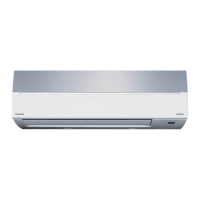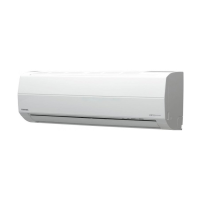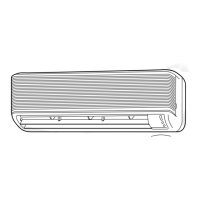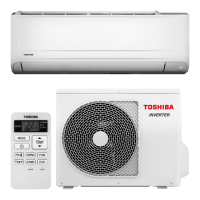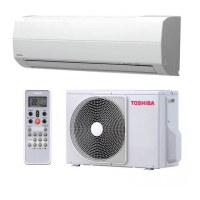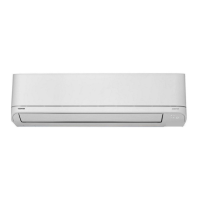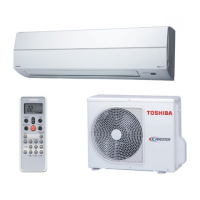
Do you have a question about the Toshiba RAS-13SKVR-E2 and is the answer not in the manual?
| Brand | Toshiba |
|---|---|
| Model | RAS-13SKVR-E2 |
| Category | Air Conditioner |
| Language | English |
Details on compressor speed vs. current and capacity variation ratios based on temperature.
Graphs illustrating cooling and heating capacity variations relative to outdoor temperature.
Crucial safety measures and precautions for handling R410A refrigerant during installation and servicing.
Guidelines for installing refrigerant piping, including material selection and joint types for R410A.
Detailed steps and precautions for processing piping materials and making flare connections for R410A.
Best practices for connecting flare joints, including torque specifications and material notes.
List of exclusive and general tools necessary for R410A air conditioner installation and servicing.
Information on suitable brazing filler materials, flux types, and their properties for pipe joining.
Method for brazing pipes while preventing oxidation using nitrogen gas flow.
Detailed dimensional drawings and component layout of the indoor unit.
Dimensional drawings and component layout of the outdoor unit, including anchor bolt details.
List of electrical parts for the indoor unit with their respective types and specifications.
List of electrical parts for the outdoor unit with their model names and ratings.
Schematic showing the flow of refrigerant through indoor and outdoor units, including key components.
Table detailing operational data like temperature conditions, pressure, and fan/compressor speeds.
Overview of control logic between indoor, outdoor units, and remote controller for overall system operation.
Comprehensive guide to various operation modes, fan controls, special functions, and system settings.
Explanation of the automatic restart feature after power failure, including setup and cancellation.
Details on remote control functions, indicator meanings, and specific operational settings.
Visual guide showing the placement and connection of indoor and outdoor units during installation.
Lists optional installation parts, accessories, and necessary tools for the installation process.
Detailed instructions for installing the indoor unit, including placement, drilling, wiring, and piping.
Guidelines for installing the outdoor unit, covering placement, draining, piping, and wiring connections.
Basic checks for power supply, voltage, and normal program operations before detailed diagnosis.
Interpreting flashing LED patterns on the indoor unit to identify fault codes and diagnose issues.
Procedure for accessing and using the remote controller's service mode for self-diagnosis and check codes.
Diagnosing issues based on specific symptoms and identifying potential wiring failures between units.
Steps to check the functionality of the air purifier and minus ion generator components.
Diagnostic procedures for the outdoor unit's inverter assembly, including checks on capacitors and motor resistance.
Methods for checking the P.C. board, fan motors, and other main components for defects.
Guide to diagnose and determine the condition of the outdoor fan motor.
Step-by-step instructions for replacing main parts of the indoor unit, such as the front panel and microcomputer.
Procedures for replacing major components of the outdoor unit, including cabinets, motors, and compressor.
Visual breakdown of the indoor unit with a list of all part numbers and descriptions.
Exploded view of specific electronic parts assembly for the indoor unit.
Visual breakdown of the outdoor unit with a list of all part numbers and descriptions.
Diagram showing the layout of the P.C. board and associated components, including sensor characteristics.

